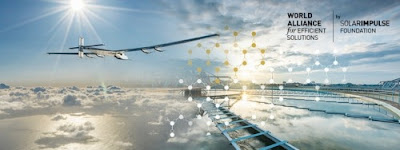TOP FUTURE USEFUL TECHS (SOLAR POWER RUNS AIRPLANES)
THE FUTURE OF FLIGHTS (SOLAR POWER RUN PLANES)
Hey guys in this series we are back with the fourth FUTURE USEFUL TECH these are solar powered airplanes. As the future without sustainable solutions seems unpredictable these days so in order to come up with this many new projects are being started one of them in this list is SOLAR IMPULSE the topic of people’s interest.
“They
made it! Yesterday it was a dream, today it’s a revolutionary airplane that
flew 40000km without fuel, a first for
energy!
Bertrand Piccard’s vision, coupled with André Borschberg’s managerial experience and the skills of a multi-disciplinary team have enabled an idea to be transformed into reality. Too big, too light and impossible to control in flight, said the experts. Nevertheless, industrial partners provided fundings and technologies to realize the most energy efficient airplane ever built.”
Bertrand Piccard’s vision, coupled with André Borschberg’s managerial experience and the skills of a multi-disciplinary team have enabled an idea to be transformed into reality. Too big, too light and impossible to control in flight, said the experts. Nevertheless, industrial partners provided fundings and technologies to realize the most energy efficient airplane ever built.”
Solar
Impulse is a Swiss
long-range experimental solar-powered
aircraft project, and
also the name
of the
project's two operational aircraft. The privately financed project is led by
Swiss engineer and businessman André
Borschberg and Swiss
psychiatrist and balloonist Bertrand Piccard, who co-piloted Breitling
Orbiter 3, the
first balloon to circle the world non-stop. The Solar Impulse project's goals were to
make the first circumnavigation of the Earth by a piloted fixed-wing
aircraft using only
solar power and to bring attention to clean
technologies.
The aircraft
are single-seat monoplanes powered by photovoltaic cells; they are capable of taking off under
their own power. The prototype, often referred to as Solar Impulse 1,
was designed to remain airborne up to 36 hours. It conducted its first test
flight in December 2009. In July 2010, it flew an entire diurnal solar cycle, including nearly nine hours of night
flying, in a 26-hour flight. Piccard and Borschberg completed successful
solar-powered flights from Switzerland to Spain and then Morocco in 2012, and conducted a
multi-stage flight across the US in 2013.
A
second aircraft, completed in 2014 and named Solar Impulse 2,
carries more solar cells and more powerful motors, among other improvements. On
9 March 2015, Piccard and Borschberg began to circumnavigate the globe with Solar
Impulse 2, departing from Abu
Dhabi in the United Arab Emirates. The aircraft was scheduled to return to Abu
Dhabi in August 2015 after a multi-stage journey around the world. By June
2015, the plane had traversed Asia, and in July 2015, it completed the longest leg of its journey, from
Japan to Hawaii. During that leg, the aircraft's batteries sustained thermal
damage that took months to repair. Solar
Impulse 2 resumed the circumnavigation in April 2016, when it flew to
California. It continued across the US until it reached New York City in June
2016. Later that month, the aircraft crossed the Atlantic Ocean to Spain. It
stopped in Egypt before returning to Abu Dhabi on 26 July 2016, more
than 16 months after it had left, completing the approximately 42,000-kilometre
(26,000-mile) first circumnavigation of the Earth by a piloted fixed-wing
aircraft using only solar power.
A flying
laboratory full of clean technologies 12 years of research and development, to
develop an aircraft powered by dozens of environmentally friendly products and
processes built with our partners. These technologies are opening up new
industrial markets and offering an opportunity for economic development, job
creation and profit environmentally friendly.







Comments
Post a Comment